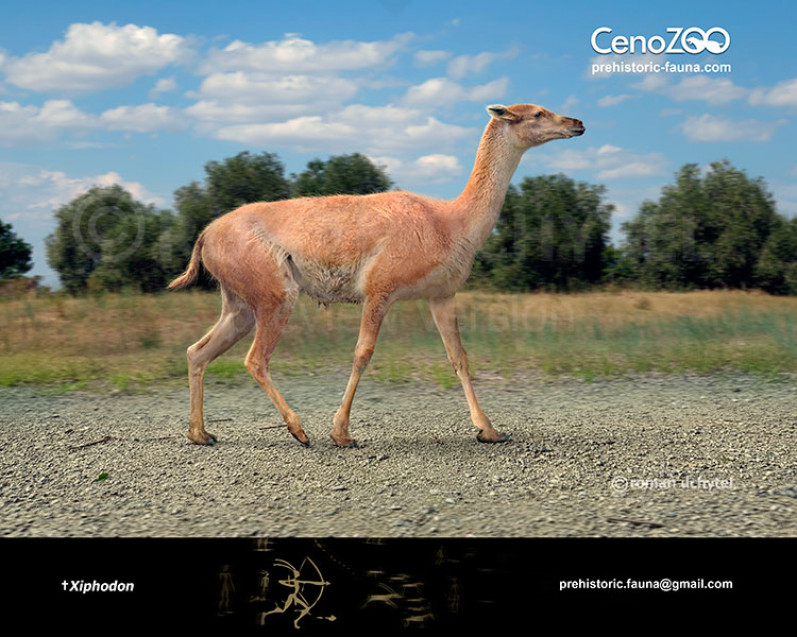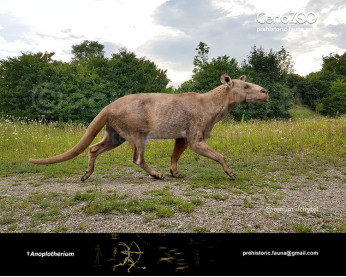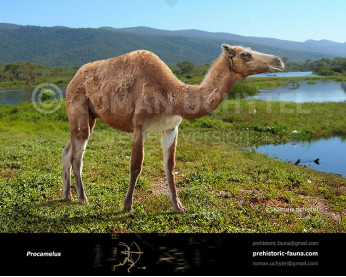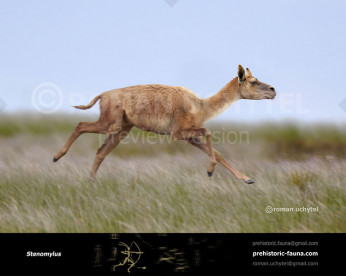Xiphodon
1000000007910000000079
Xiphodon (†Xiphodon (Cuvier, 1822))
Order: Artiodactyla
Family: †Xiphodontidae
Time period: the Eocene of Europe (41.3 - 38.0 Ma)
A typical representative: Xiphodon gracilis (formerly Anoplotherium gracile)
Xiphodon is an extinct closely related to camels found in Europe. It looked much more similar to the Anoplotherium and was suspected that it was actually a more slender form of these animals, known as ‘Anoplotherium gracile’, now referred to as Xiphodon gracilis. It had slender legs, didactylous feet, and small canine teeth.
Their bodies look well-muscled but they were not cast as especially bulky or heavyset creatures, meeting early interpretations of this species as a fast runner (Owen, 1846; Rudwick, 1997). The camel-like anatomical influence is even more obvious than with Anoplotherium commune and the overall body plan is very reminiscent of the South American guanaco Lama guanicoe.
Payment
You may use multiple payment methods to buy image such as credit cards, PayPal and bank transfer.
Xiphodon (†Xiphodon (Cuvier, 1822))
Order: Artiodactyla
Family: †Xiphodontidae
Time period: the Eocene of Europe (41.3 - 38.0 Ma)
A typical representative: Xiphodon gracilis (formerly Anoplotherium gracile)
Xiphodon is an extinct closely related to camels found in Europe. It looked much more similar to the Anoplotherium and was suspected that it was actually a more slender form of these animals, known as ‘Anoplotherium gracile’, now referred to as Xiphodon gracilis. It had slender legs, didactylous feet, and small canine teeth.
Their bodies look well-muscled but they were not cast as especially bulky or heavyset creatures, meeting early interpretations of this species as a fast runner (Owen, 1846; Rudwick, 1997). The camel-like anatomical influence is even more obvious than with Anoplotherium commune and the overall body plan is very reminiscent of the South American guanaco Lama guanicoe.


-797x638.jpg)

-70x56.jpg)
-346x277.jpg)






